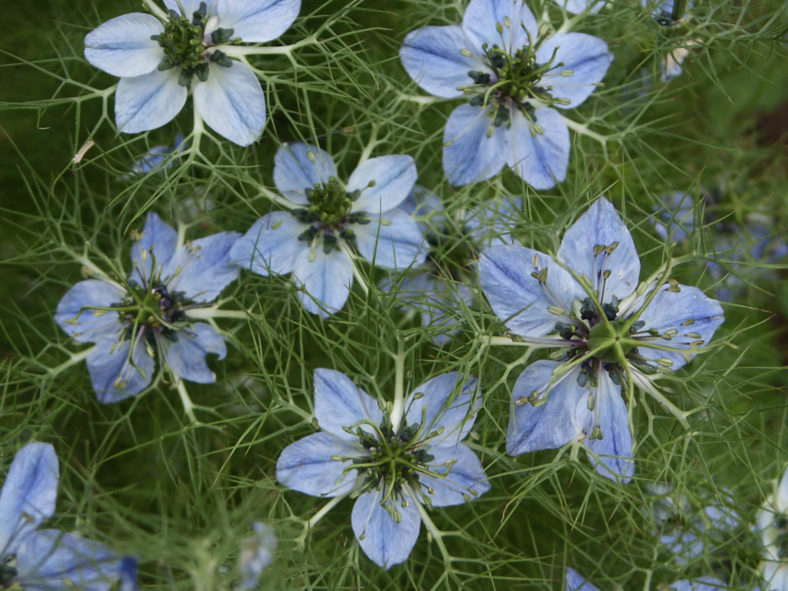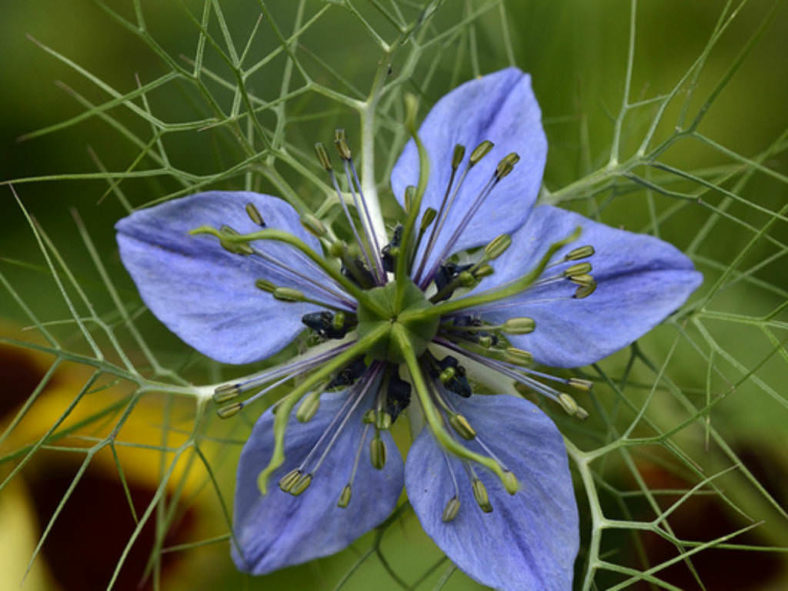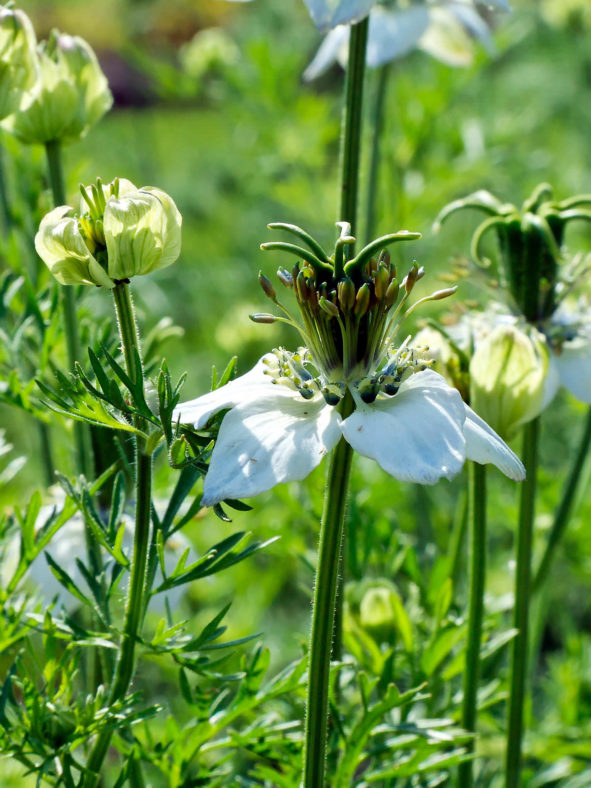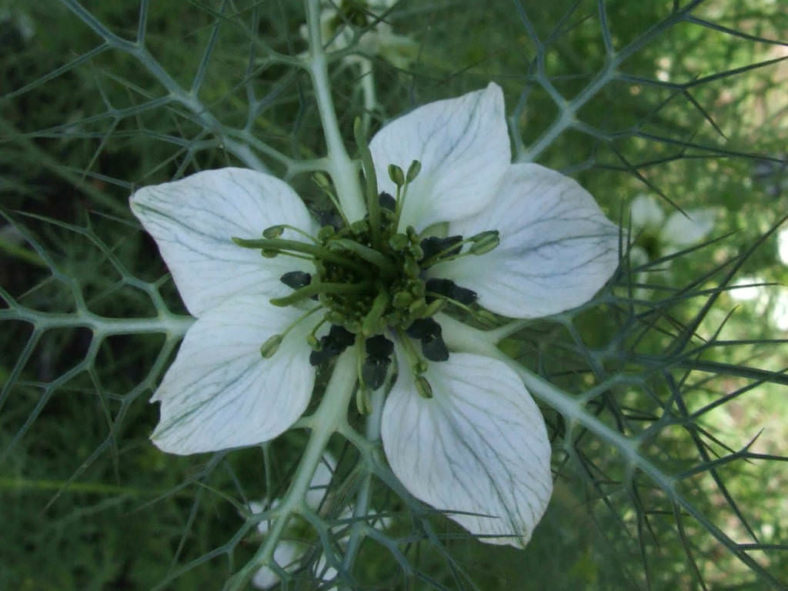Scientific Name
Nigella sativa L.
Common Name(s)
Fennel Flower, Nutmeg Flower, Black Caraway, Roman Coriander, Black Cumin, Nigella
Synonym(s)
Nigella cretica
Scientific Classification
Family: Ranunculaceae
Subfamily: Ranunculoideae
Tribe: Nigelleae
Genus: Nigella
Origin
Nigella sativa is native to Iraq and Turkey.
Flower
Color: Pale blue and white
Bloom Time: July
Description
Nigella sativa is an annual flowering plant with linear, finely divided leaves. It grows up to 12 inches (30 cm) tall.
The flowers are hermaphrodites (have both male and female organs) and are usually colored pale blue and white. The plant blooms in July and the seeds ripen in September. Fruits are large and inflated capsules composed of three to seven united follicles, each containing numerous seeds.

Hardiness
It is grown as an annual plant, so it has no USDA hardiness zone.
How to Grow and Care
Plant Nigella sativa seeds when no risk of frost exists. Sprouts appear in one to two weeks and flowers about two to three months later.
Test the soil pH with a home kit two to three months before the desired planting date to verify the pH is slightly acidic with a value of 6.0 to 7.0. Work ground rock sulfur into the soil to lower the pH if needed. Follow the package application rate based on the current pH.
Let the soil rest for two to three months to give the amendment time to change the pH. Work 2 to 3 inches (5 to 7.5 cm) of organic compost into the planting area to a depth of 8 to 10 inches (20 to 25 cm). Compost increases the nutrient value of the soil and is a natural fertilizer.
Sprinkle the Nigella sativa seeds lightly over the planting area. Next, sprinkle about 1/4 to 1/2 inch (8 to 13 mm) of soil over the seeds. Pat the soil gently to hold the seeds in place.
See more at How to Grow and Care for Nigella sativa.
Links
- Back to genus Nigella
- Plantpedia: Browse flowering plants by Scientific Name, Common Name, Genus, Family, USDA Hardiness Zone, or Origin
Photo Gallery
Click on a photo to see a larger version.




